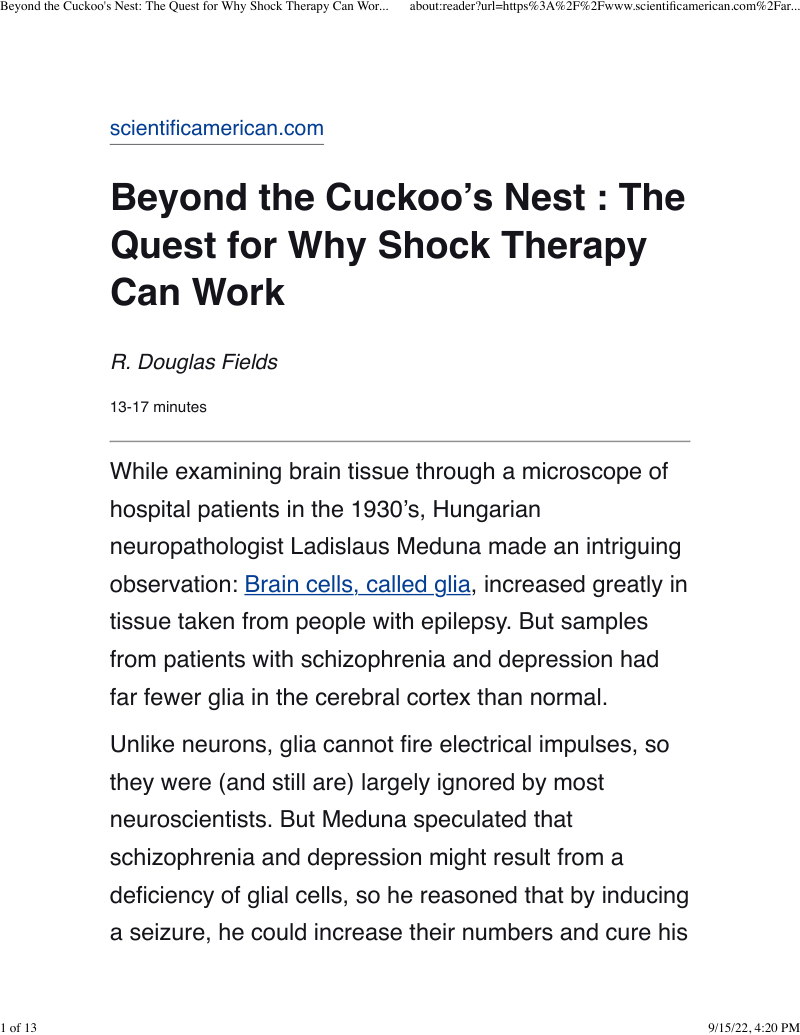Scientific American refers to One Flew Over the Cuckoo’s Nest when discussing Electro-Convulsive Therapy (ECT).
- Type
- Periodical
- Source
- R. Douglas Fields Non-LDS
- Hearsay
- Direct
- Reference
R. Douglas Fields, "Beyond the Cuckoo’s Nest: The Quest for Why Shock Therapy Can Work," Scientific American, November, 2017, accessed September 15, 2022
- Scribe/Publisher
- Scientific American
- People
- R. Douglas Fields
- Audience
- Reading Public
- Transcription
. . .
In contrast to the horrifying scenes dramatizing shock therapy in movies like One Flew Over the Cuckoo’s Nest, violent seizures did not wrack the patient’s body when the high-voltage switch was thrown. “You see the body tense for a period of time and then it relaxes—that’s it,” Ingram says. “It’s amazing,” she adds, “patients who are severely depressed, suicidal or catatonic are given ECT and two weeks later they are up, happy, chatting with the physicians and nurses.”
Used on over 100,000 people a year in the U.S., ECT is highly effective in treating severe depression, bipolar disorder and other mental illnesses. But it does not always work—and some health providers now shy away from the procedure. “I was watching people stay sick, says Jessica Eure, professional counselor at the Virginia Center for Neurofeedback, recalling her work in a mental hospital with severely psychotic, suicidal and homicidal patients. “They give them ECT and it gets them perked up for a couple of months—but then you are back to where you were, but maybe with some memory loss. It was really upsetting to me.” Discouraged by ECT, Eure now uses neurofeedback that monitors a patient’s brain waves to treat people with a range of mental illnesses.
. . .
- Citations in Mormonr Qnas
The B. H. Roberts Foundation is not owned by, operated by, or affiliated with the Church of Jesus Christ of Latter-day Saints.

